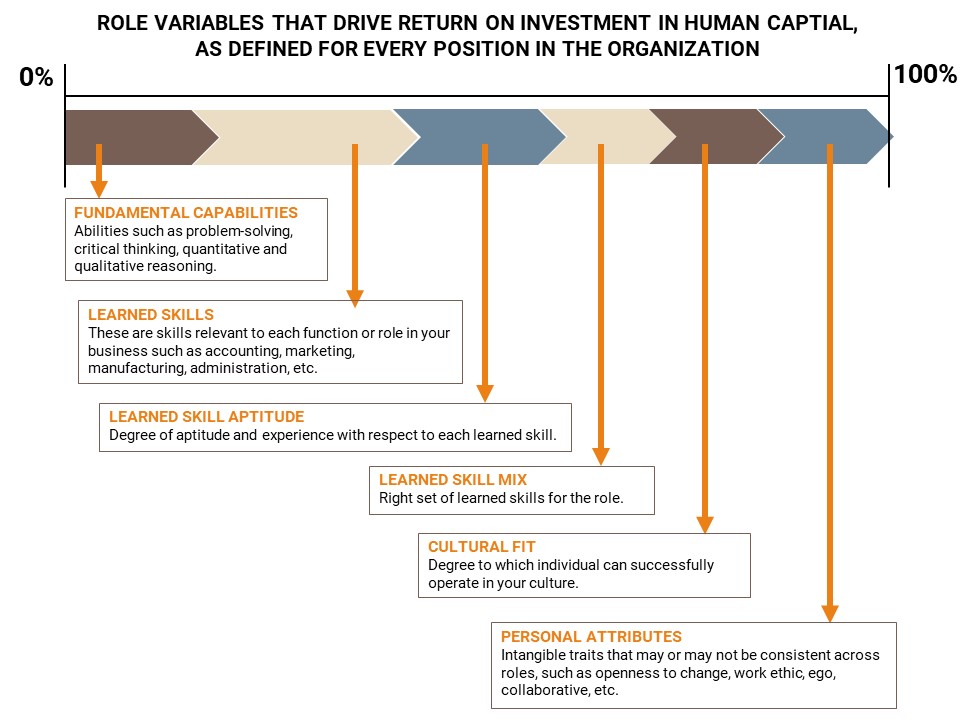Regardless of your business model, your technology, your go-to-market channels, whether you are a market leader or operate in a fragmented, commoditized industry, the single largest and most important investment your business makes every day, every month, year on year, is the investment in human capital, in your people.
In your industry, your company, what are the drivers of your return on investment? The single most important investment that cuts across all of them is the investment in human capital.
Role Variables
There are countless books, studies and theories that point to high performing companies, large and small: those that have the overall highest performing people and teams win consistently in the marketplace.
We can illustrate the premise with a core set of variables that should be defined for each and every role and individual in which you invest:

Building an organization, role by role, from the ground up is hypothetical for an already-operating business, but it is nonetheless vital to determining whether you are investing in the right people and whether that human capital investment delivers return. People that don’t meet the requirements across all of the Role Variables of their position will deliver sub-optimal results. Sub-optimal results lead to a sub-optimal, even negative, return on the financial capital invested in human capital.
Why would anyone knowingly make a sub-optimal investment? Do executives assess their human capital investment in the same way they would assess their investment portfolio? Most organizations don’t make the assessments of their existing human capital, let alone the new investments they make when they hire.
Defining these six macro variables for every position in your company enables you to determine where you should focus your marginal investment in human capital. Alternatively put, where will investment in better or more human capital deliver the most return? Clearly, it can also provide a framework for assessing your current investment as well.
Alexandra Zaporozec is the Managing Partner or Marengo Hampshire Partners, a best-in-class recruiting and executive search firm that works with clients to maximize their investment in human capital. The firm helps clients to bring people with the right skills, experience and potential to each and every role in their organization, from C-Suite to middle management to line staff, based upon the premise that each and every investment in human capital needs to deliver incremental return.



 Alexandra Zaporozec is the Managing Partner or Marengo Hampshire Partners, a best-in-class recruiting and executive search firm that works with clients to maximize their investment in human capital. The firm helps clients to bring people with the right skills, experience and potential to each and every role in their organization, from C-Suite to middle management to line staff, based upon the premise that each and every investment in human capital needs to deliver incremental return.
Alexandra Zaporozec is the Managing Partner or Marengo Hampshire Partners, a best-in-class recruiting and executive search firm that works with clients to maximize their investment in human capital. The firm helps clients to bring people with the right skills, experience and potential to each and every role in their organization, from C-Suite to middle management to line staff, based upon the premise that each and every investment in human capital needs to deliver incremental return.